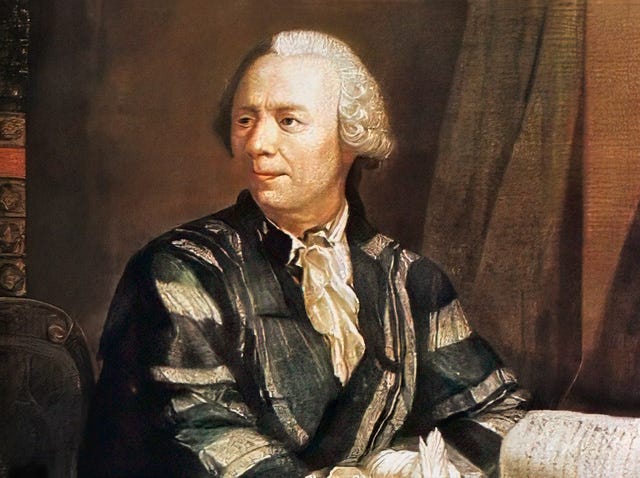To navigate life consciously, our minds need to put some order onto the physical chaos that our bodies inhabit. Science and math collect the patterns that can be understood and codified within the limitation and constraints of our perception and cognition, in other words, they model the “easy paths”.
Our brains have evolved to do that through perceptual lock-in, like phased-locked loops zero-in on target frequencies. We see, feel and hear the spectra that allow us to survive, and we build devices to use the spectra we cannot sense with our biology by analogy. Fourier analysis is fundamental to pattern recognition, to what we call reality.
The integration of what can be perceived into codified neural patterns ready for storage is what we call memory and knowledge.
In mathematics, equations that can be solved symbolically are studied and mined for insights and patterns, and the field expands into tributaries. Equations that resist solution outnumber these, and in analysis, many of these differential equations are chaotic.
The study of chaos is a meta approach to managing those patterns, and links with topology and digital logic are found, again creating a sense of order, effectively “rules” that we can grasp and classify.
In everyday life, when the order we have put into our affairs, be it money, property, relationships, or politics is lost or is wilfully subverted, we sense evil. It is a form of dis-empowerment, destruction (to de-structure). Conversely, we sense satisfaction when we manage to integrate and control.
More banally, biological life is ultimately destructive. To grow we consume other life forms, the cycle of entropy consumes the energy stored in organisms (organized isms).
Collaboration, procreation, relationships are somewhere in between construction and destruction, they are not purely acquisitive. They consolidate our growth in time. The instincts and need for territorial protection then becomes fundamental to fence off and defend what has been acquired and built.
This could be construed as morality, so long as it is not destructive of the greater good of the tribe and ultimately of the species and of the ecosystem. We are just beginning to realize the urgent necessity to widen the scope like this.
The apparent paradox of low-impedance mass communication (e.g. social media) leading to destructive lack of collaboration and potential political chaos is likely due to the tendency to aggregate perceived meaning without real-context. In embodied knowledge, the constraints of the natural environment filter the chaotic data into fit and unfit. The digital realm has not yet evolved well enough to guard against false poles and zeroes. The feedback loops we have in place are based on growth of profit and on attracting attention for pleasure, not for survival and protection of order and territory. This can be an engineering problem, provided it is informed by history and culture in the wider sense. This is an argument for the humanities, for the two cultures to come together.
Mechanisms have evolved to create poles of knowledge, guardian-ships, institutions, professions that we call culture and civilization. This ecosystem is polarized, and will also have sinks, i.e. zeros countering and “balancing” the poles. Identifying them is the role of cultural guardianship. Stirring the pot is the role of commerce and chaos.
The math of chaos is the boundary of what we can generalize. Statistics is a meta-math of chaos, empirical, descriptive and predictive. The rest of mathematics, like number theory, analysis, logic is what we have managed to know given our perceptual limitation with more detail and certainty, a map of what is possible, to test and grow against, but it exists as a relatively small set of navigable rivers in a largely unknown and likely unbounded landscape.
Computers are expanding these boundaries because they are a new medium of perception, amplifiers of detail and time, that can drill into the complexity of chaos, without always necessarily explaining the patterns, especially today in the era of self-training neural networks and access to large unfiltered data sets.
How to constructively constrain these new senses so that they do no lead to open control loops that create more chaos is the challenge of the new AI landscape.
.png)





